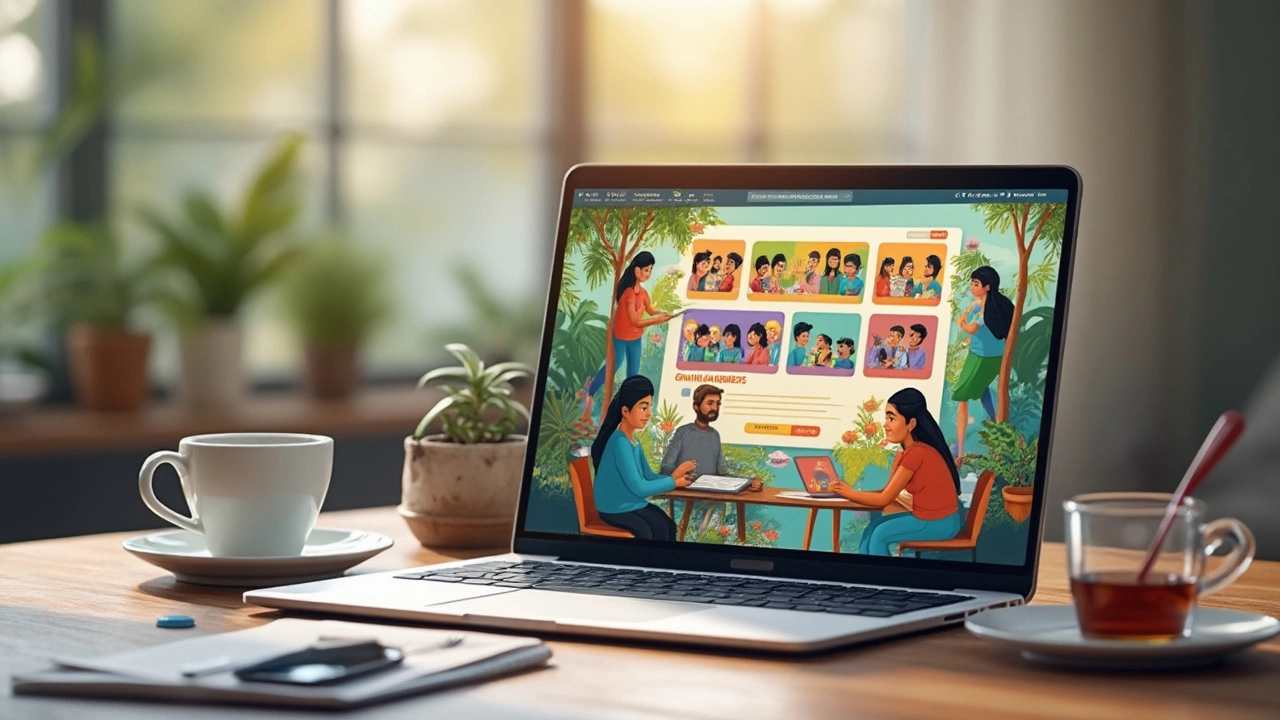
Imagine waking up to find that people all over the world are learning something new—thanks to something you built. Right now, eLearning is one of the fastest-growing industries, worth over $375 billion according to a recent HolonIQ report. Whether you want to teach a skill, spread knowledge, or just build a business, creating an online learning platform lets you reach way beyond your neighborhood and connect with learners everywhere. But let’s be honest: making an eLearning platform isn’t a weekend side project. It’s a combo of tech, design, community-building, and hustle. So, how do you actually pull it off?
Figuring Out What Your Learners Need and Picking the Right Tools
Jumping right into platforms and code can be tempting, but first things first—you need a clear idea of who your platform is for and what makes it different. Are your users high schoolers prepping for exams? Busy adults looking to upskill at night? Yoga teachers sharing their passion? Knowing your audience right down to what keeps them awake at night makes all the difference. I’ve seen folks launch amazing concepts but fall flat because they assumed people wanted video lectures when what students really craved was hands-on quizzes and feedback. Run surveys. Hang out in online forums. Maybe even be sneaky and review comments on courses that already exist.
After you know your people, think about what features matter most. Here’s a table with common must-haves and nice-to-haves, just from what I’ve seen work (and not work) on eLearning sites:
| Must-Haves | Nice-to-Haves |
|---|---|
| Video hosting | Gamification (badges, points) |
| Quizzes & assessments | Live discussions or webinars |
| Student progress tracking | AI-powered feedback |
| Payment & registration system | Mobile app integration |
| Accessibility features | Personalized course suggestions |
You don’t need to reinvent the wheel. Instead, lean on existing software when possible. If you want quick and simple, platforms like Teachable or Thinkific will get you up fast—just upload videos, set prices, and go. For more control or to save on fees long-term (if you’re thinking big), there’s open-source stuff like Moodle or WordPress with LearnDash, where you can tinker and add plugins as you grow. Building completely from scratch? Only do this if you’ve got at least one developer friend who answers your texts on weekends, because it gets complicated, fast, with security and uptime and all that jazz.
No matter your approach, always check how much you can customize, how easily you can add new features, and—big one—how your site handles a ton of people logging in at once. (Trust me, if your platform actually goes viral, you want it ready). Make a simple checklist and rate each tech option. Speed can save you six months or more; the wrong choice slows you down and drains your wallet.
If you’re worrying about costs, here’s a little secret: start tiny before you scale. Mira, my wife, actually started her language tutoring business with a $99 plugin on a cheap hosting plan. She only invested in a fancier system when her fifth student enrolled. Monetizing too soon can burn trust, so focus on nailing the actual learning before splurging on bells and whistles.

Designing Courses That Actually Teach & Keep People Hooked
So, you’ve sorted your tech. Now the magic (or the headache) is the actual content. Believe it or not, most people give up on eLearning courses within the first week. That’s not because they’re lazy—it’s usually because the course is dull, confusing, or just too hard to follow. The trick? Mix things up. Give bite-sized lessons, clear instructions, and sprinkle in interactive bits. Just dumping a two-hour video is rarely the way.
It’s way more effective to break your material into modules—think 5 to 10-minute chunks—and drop a short quiz or a discussion board after each one. Real data shows that microlearning (keeping lessons brief) boosts retention by up to 80% compared to traditional lectures. I like to draw out a roadmap on paper (yeah, old school), laying out what users will learn, when they’ll practice, and where they can get feedback. If you’re not good at scripting lessons, consider hiring a freelance instructional designer—they’re ninjas at turning boring concepts into engaging activities.
Don’t just talk at your students. Make them do stuff: drag-and-drop puzzles, timed quizzes, “submit your answer and compare with the group” type exercises. The best platforms let students talk to each other, not just the instructor. Want an idea? Set up a Discord server, even if your website is basic at the start. It builds community and gives folks a reason to come back and learn more, not just binge-watch and bail.
Accessibility is a game-changer. Caption your videos. Use high-contrast text for people who need it. If you want to reach the biggest audience, that’s not extra—it’s core design. The World Health Organization says about 15% of people worldwide have some form of disability, so ignore this at your own risk. Add downloadable transcripts, and make sure it’s possible to learn with just audio, not only visual materials.
Content needs updates, too. If you’re teaching coding, tools change faster than you can blink. Even language courses need fresh conversations and slang. Plan to revisit your main materials every three to six months. And yes, listen to your students—they'll tell you loud and clear if something’s confusing or out of date. Have a simple way for them to leave feedback, like a “rate this lesson” button after every section.

Launching, Growing, and Making Money With Your Platform
When you’re ready, you don’t just hit ‘publish’ and cross your fingers. Most successful platforms have at least a soft launch—a small group of users, maybe family and friends or a Meetup group, helps you spot what’s clear and what’s confusing. Use this beta group to find broken links, laggy videos, or lessons that just don’t land. Be shameless about asking your first ten learners for honest opinions—they notice things you’d never catch alone. Mira still laughs about her first launch, when half the sign-up emails landed in the spam folder.
Pricing is tricky. Free is attractive, but if you want this to be a real *thing*, try offering a free basic course and a paid advanced version. This is the classic “freemium” model—think Spotify for learning. Last year, Coursera reported nearly 70% of new signups came for free, but the ones who paid for certificates made up most of their revenue. You could also do subscription plans, bundle courses, or even sell private tutoring add-ons. Just keep your payment process simple—nobody wants to fight through a ten-page checkout.
Marketing? Start with your own circles. Post on LinkedIn, share in relevant Facebook groups, email those old contacts who might actually care. Early users give testimonials, feedback, and—if your content is solid—word of mouth can snowball. Paid ads work, but they can guzzle your budget quickly. Even YouTube or Instagram reels showing your personality and a quick sample lesson can pull in the curious. Teaching software skills? Try a tutorial on Reddit or Hacker News with a link to your platform at the end.
Retention is the secret sauce. Keep students coming back with reminders, new content, live events, or weekly challenges. If you see a user logging in less, shoot a friendly reminder email or even offer a discount for starting a new course. According to TalentLMS, platforms with a mobile app and regular push notifications see 35% higher return rates than just web-based sites.
Finally, don’t forget about support. People with tech issues or questions about the material will bail fast if they feel ignored. Set up a basic ticket system or even a WhatsApp number for the busiest hours. Track your feedback (“this link is broken,” “this quiz is too hard”), and actually act on it. Build a roadmap for adding new features, and let your users vote for what comes next.
There’s no blueprint that fits everyone. From language learning with weekly live calls to tech skills with peer-reviewed assignments, the winning formula is all about knowing your crowd and being nimble. The world doesn’t need another cookie-cutter online school—it needs creative stuff built by real people for real learners. Who knows, maybe your eLearning platform is what changes the way someone learns forever.





